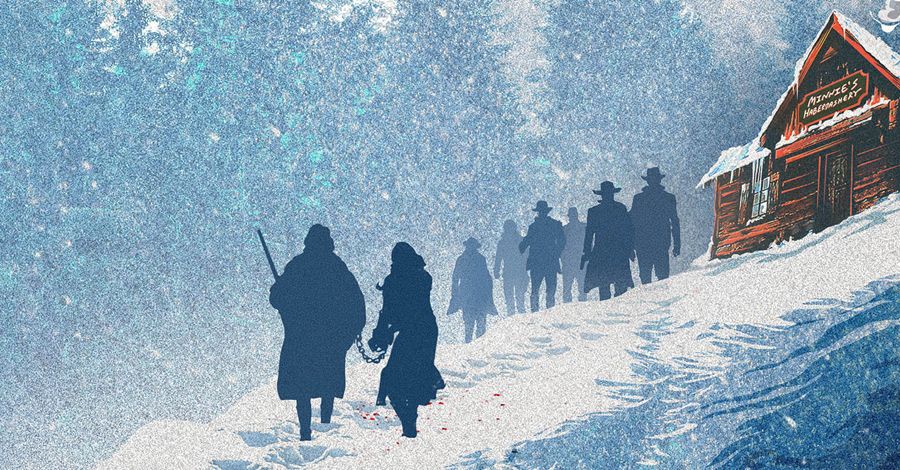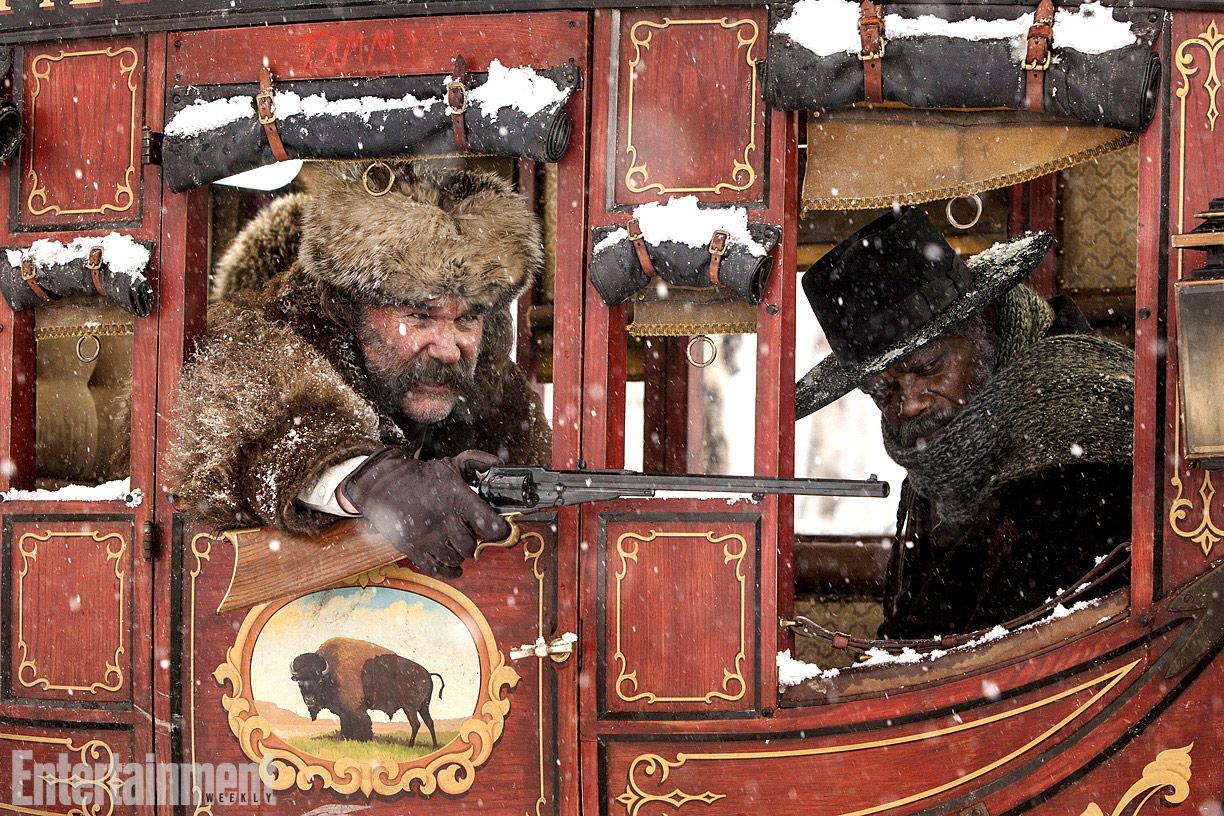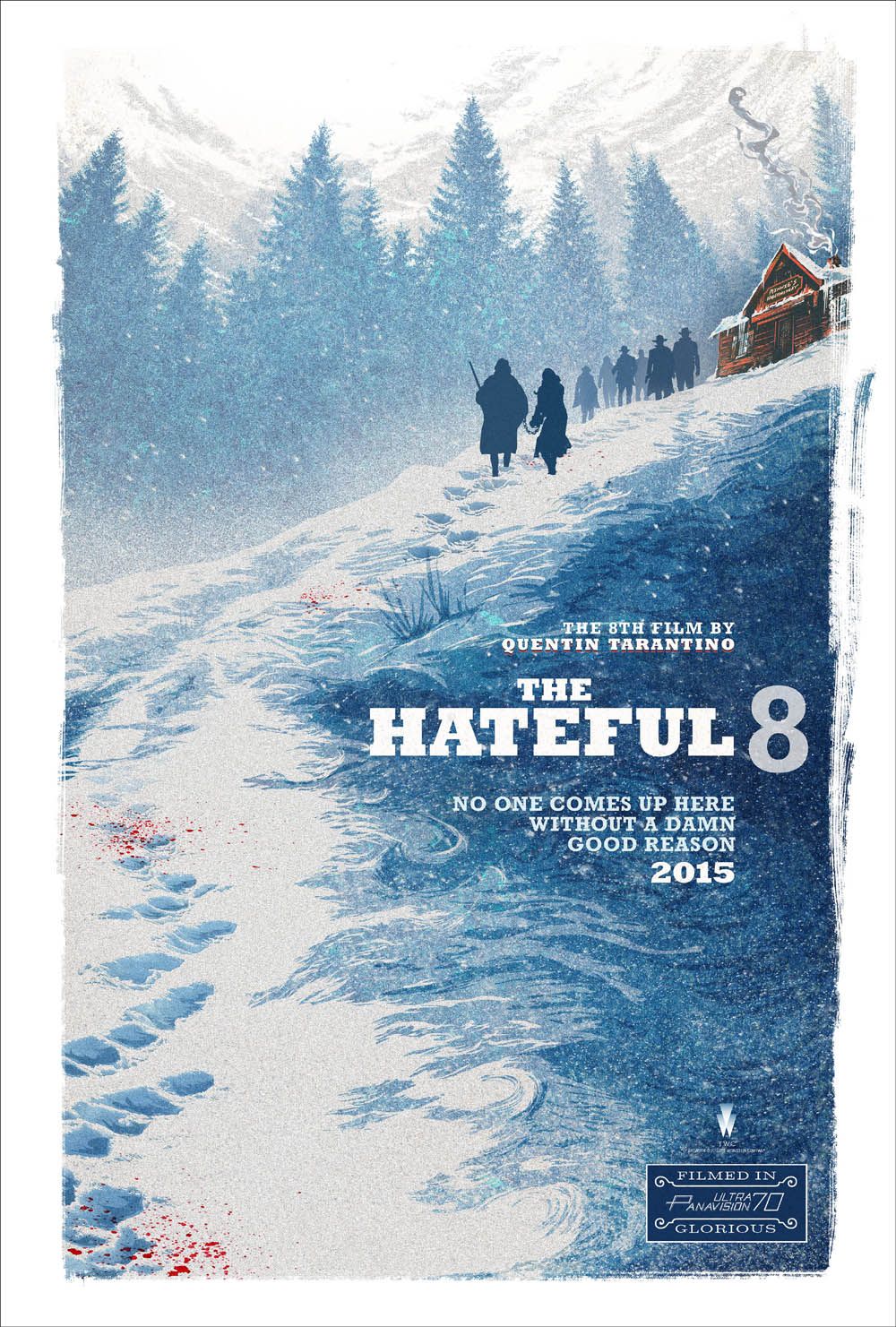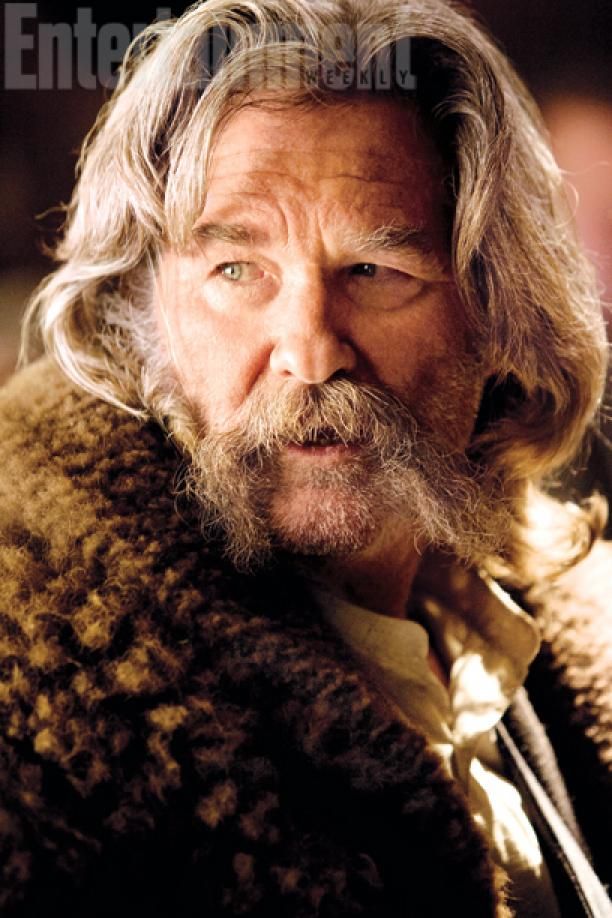Quentin Tarantino used his 45-minute panel at Comic-Con International in San Diego to give attendees a sneak peek at his eighth film, “The Hateful Eight,” and tease what his future might hold after its release. He also wanted to educate fans on the history of “roadshows,” the uniqueness of shooting with 65mm lenses, and why film looks better when projected in “glorious 70mm.”
Moderated by Nerdist founder Chris Hardwick, the presentation began with a video greeting from “Hateful Eight” co-star Samuel L. Jackson, who explained the history of theatrical roadshows, in which epic films like “Gone With the Wind,” “El Cid” and “Ben-Hur” would open in a limited number of venues in major cities before receiving nationwide release. These were big events, with programs, overtures, intermissions and lobby cards. Tarantino also appeared on the video to discuss how he shot the Western using 65mm lenses, knowing that if he did so, there would have to be 70mm film prints in circulation, screening for people who care. Although 3,000 theaters across the country won’t have the capabilities of screening it that way, perhaps will. That’s how the “roadshow” idea came about.
The video went on to explain that “The Hateful Eight” is only the 11th feature in history to be filmed in ultra-wide Panavision -- the widest format available for film projection, yielding an extremely wide aspect ratio of 2.76:1. (Other motion pictures shot in this format include “Ben-Hur,” “The Fall of the Roman Empire” and “Battle of the Bulge.” The last film to be shot with these lenses was 1966’s “Khartoum.”) Tarantino watched a screening of “Ben-Hur” in a theater at the Panavision offices a few years ago, and was amazed by what he saw. He asked whether the lenses still existed and if they still worked. When he was told that they did, he used them to shoot some test footage. Pleased with the result, Tarantino settled on his approach to the film.
When the video ended, Tarantino appeared before Hall H crowd and picked up where the video left off. “It wasn’t like these were the same types of lenses that they used to shoot ‘Ben-Hur,’” he explained. “These were the lenses that they used to shoot ‘Ben-Hur.’ They only made one set of them. These are the lenses that they shot ‘It’s a Mad, Mad, Mad, Mad World’ with. These are the same lenses they used to shoot Marlon Brando’s ‘Mutiny on the Bounty.’”
“It’s like you’re guarding movie history,” Hardwick added.
He asked Tarantino whether he had envisioned shooting “The Hateful Eight” that way when he was writing or whether his approach evolved.
“It evolved as time went on,” the filmmaker replied. “I am not a fan of digital projection. Everyone knows I am not a fan of shooting on digital, but I am not even a fan of digital projection. By losing film projection, we’ve already ceded too much ground to the barbarians. I didn’t work this hard for 20 years to get diminishing returns. To work so hard to get a few screenings in 35mm and the rest in DCP [Digital Cinema Projection] -- that’s not why I got into this business. That’s not the movie industry that I signed up for. But I thought, if I shoot it in 70, they are going to have to release it in 70. They wouldn’t waste that money. So that was the initial idea. I knew that there would be some theaters around the world showing it in film on 70, even though there would still be 3,000 screens showing it in digital.”
Tarantino said that once they secured the lenses, the film continued to evolve. He said he was asked by people familiar with the project what the point was of shooting in 70mm when a majority of the film takes place in a single location, like “Reservoir Dogs.” He said he hopes that when the film is released it will break the notions that people have. “There is a notion that 70mm is for travelogues,” he said. “It’s to shoot films like ‘Lawrence of Arabia.’ It’s to shoot mountains or different landscapes. No. When you shoot in 70mm, and you shoot it indoors, you can actually make it more intimate. It can take you closer to the actors, it can make it more vivid. It makes it more vital. It’s not just for shooting beautiful scenery. It’s for shooting great drama.”
The crowd was then shown a seven-minute teaser that introduced each of the characters that make up “The Hateful Eight” and hinted at how they end up together, accompanied by the tension, humor, and violence that fans expect from a Tarantino film.
Once the video ended, Tarantino was joined onstage by stars Kurt Russell, Jennifer Jason Leigh, Walton Goggins, Demian Bichir, Tim Roth, Michael Madsen and Bruce Dern.
Russell said he became involved with “The Hateful Eight” when he was asked to participate in a live reading of the script in front of an audience. When he was later asked whether he wanted to appear in the movie, the veteran actor said yes.
“There’s nobody like this guy [Tarantino]. He’s in a league of his own,” Russell said. “Once or twice in a generation someone comes along who not only does things differently, does things in his or her own way. You can tell with just five frames who it is. I think I can speak for all the great people on this stage when I say that I wish that every actor and actress has the opportunity to work with Quentin at least once. It’s a fantastic experience -- not only for what he does but how he does it. It’s a circus that you want to be a part of.”
Leigh said her character is doing what she can to survive. “She’s a bit feral,” she revealed. “Crazy like a fox.”
Goggins recalled there was a time during shooting a scene with the other seven actors when he froze up and became very emotional. “You hope that you can hang on long enough to put yourself in a situation where a guy like Quentin can give you a shot,” the “Justified” veteran said.
Tarantino was asked by an audience member about the notorious script leak last year that led the filmmaker to cancel “The Hateful Eight” before ultimately deciding to move forward. “What pissed me off about what happened with the leak was that normally when I’m done with a script, I’m ready to go into production,” he replied. “This was one where I wanted to go with two or three drafts. There were certain plot lines in the first draft that I wasn’t quite ready to tie up yet. I still had a couple more drafts to go. That’s why I was a little disconcerted when it got out there. Having said that, my process was my process. I yelled and screamed about it, but I kept on doing what I planned to do. It just got more public than I would have wanted it to.”
He was then asked whether he was now a Western director, after following “Django Unchained” with “The Hateful Eight.” “I actually feel that when it comes to Westerns, you have to make at least three Westerns to call yourself a Western director,” Tarantino replied. “Anything less than that and you’re just dabbling in the genre. I will eventually make three Westerns so that I can officially call myself a Western director.”
He said he cast Bichir in the role of Bob “The Mexican” based on the advice of Robert Rodriquez, who had worked with the actor on “Machete Kills.” “He said, ‘Don’t even think about it. Just hire him.’”
“I love you, Robert!” Bichir yelled, triggering laughter from the audience.
“Demian is such an amazing actor,” Tarantino continued. “If you look at what was on the page and you see what Demian delivered with it, you’re like, ‘How the fuck did you get there from here? What’s on the page doesn’t really reflect what he ended up doing. He’s like ‘Fuck the page!’”
“Talk about a chameleon,” Russell chimed in. “We worked together for four months. We got on the plane in Los Angeles to come down here today. None of us recognized Demian. We didn’t know who he was. I thought it was Jennifer’s security.”
Roth, a frequent Tarantino collaborator, said working said working with the director is easy: He just does what he’s told. “There are very few writer/directors who are so clear with what they want. My fear is that I was doing too much -- being too over the top,” he said.
Madsen, who reunited with Roth onscreen for the first time since 1992’s “Reservoir Dogs,” said they picked up where they left off. “I think we took it one step further,” he said. “We’re better, we’re smarter, a little bit older, but still under control of the greatest director on the planet.”
Dern said he’s in the film because “the kid [Tarantino] grew up watching me be a jerk on television. The excitement for all of us was just being asked by this man to be in his movie. That’s number one,” he explained. “Number two: Quentin has the greatest attention to detail on a set making a scene as any director who has ever lived. I was excited to come to work every day with this man because I thought we might have a chance to do something that has never been done before.”
Tarantino was asked about the recent interview in which he said he would retire after making 10 films. He clarified that he was responding to a question on an artist’s vitality, and that the quote was taken out of context.
“I kind of like the idea of 10 and done,” Tarantino explained. “You have to keep in mind, though, if I stay on my current path, I make about three movies a decade. So this is film number two of this decade. So even if I end at 10 films, that’s still a little more than a decade away. And things change. If I can’t shoot on film or if film goes away, I might not even make it to 10. However, I may say to hell with it and make 15. Who knows? I like the idea of getting out early, though, and leave you wanting a little bit more.
“I don’t want to be out of touch,” he continued. “And if everything changes, and film goes away, well, then maybe I am out of touch and it’s time to step aside and let other people take the road. On the other hand, though, one of the things that I don’t like about digital projection, is to me it’s like HBO in public. You’re just watching television in public. So if that’s what movies become -- then I can move to television. So maybe I have 10 movies and three miniseries. I can write my stories and they’re as long as they are, and I make these novels for television.”
Tarantino was also asked about “Kill Bill 3.” “We’ll see,” he said. “Uma [Thurman] would like to do it. We talk about it every once in a while. We have to wait until Uma gets old enough for the daughter to come and kill her.”
Asked about the best scene he’s ever written, Tarantino thought for a moment before naming the interrogation at the French farmhouse at the beginning of “Inglorious Basterds,” followed by the Christopher Walken/Dennis Hopper sequence in “True Romance.”
Tarantino closed the panel with a big announcement: Legendary film composer Ennio Morricone is writing an original score for “The Hateful Eight.” It’s the first original score ever for a Tarantino film, and Morricone’s first Western in 40 years.
“The Hateful Eight” opens Dec. 25 in limited release before going nationwide on Jan. 8.




